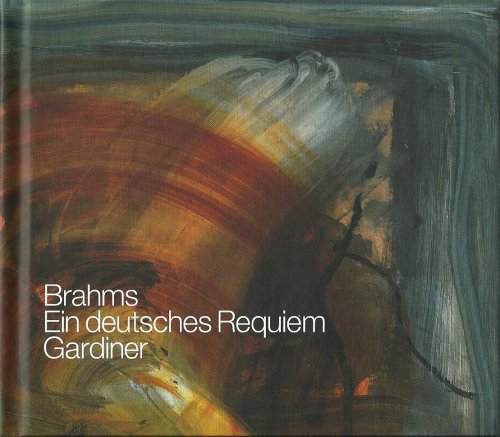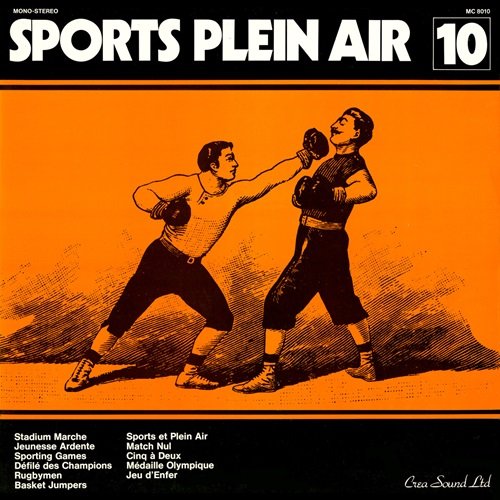John-Eliot Gardiner - Brahms: Ein deutsches Requiem [Live 2007 Recording] (2012) CD-Rip

Artist: John-Eliot Gardiner
Title: Brahms: Ein deutsches Requiem
Year Of Release: 2012
Label: Soli Deo Gloria
Genre: Classical
Quality: FLAC (image+.cue,log,scans)
Total Time: 01:17:23
WebSite: Album Preview
Tracklist: Title: Brahms: Ein deutsches Requiem
Year Of Release: 2012
Label: Soli Deo Gloria
Genre: Classical
Quality: FLAC (image+.cue,log,scans)
Total Time: 01:17:23
WebSite: Album Preview
Heinrich Schütz (1585–1672)
01. Wie lieblich sind deine Wohnunge (Psalm 84), for double chorus & continuo, SWV 29 (Op. 2/8) [0:08:07.06]
02. Selig sind die Toten, motet for 2 sopranos, alto, 2 tenors, bass & continuo, SWV 391 (Op. 11/23) [0:04:04.28]
Johannes Brahms (1833-1897):
03. Ein deutsches Requiem (A German Requiem), for soprano, baritone, chorus & orchestra, Op. 45: 1. Selig sind, die da Leid tragen. Ziemlich langsam und mit Ausdruck [0:10:44.55]
04. Ein deutsches Requiem (A German Requiem), for soprano, baritone, chorus & orchestra, Op. 45: 2. Denn alles Fleisch es ist wie Gras. Langsam, marschmäßig [0:12:43.31]
05. Ein deutsches Requiem (A German Requiem), for soprano, baritone, chorus & orchestra, Op. 45: 3. Herr, lehre doch mich. Andante moderato [0:08:34.12]
06. Ein deutsches Requiem (A German Requiem), for soprano, baritone, chorus & orchestra, Op. 45: 4. Wie leiblich sind deine Wohnungen. Mäßig bewegt [0:05:11.32]
07. Ein deutsches Requiem (A German Requiem), for soprano, baritone, chorus & orchestra, Op. 45: 5. Ihr habt nun Traurigkeit. Langsam [0:07:22.18]
08. Ein deutsches Requiem (A German Requiem), for soprano, baritone, chorus & orchestra, Op. 45: 6. Denn wir haben hie keine bleibende Statt. Andante [0:10:39.74]
09. Ein deutsches Requiem (A German Requiem), for soprano, baritone, chorus & orchestra, Op. 45: 7. Selig sind die Toten, die in dem Herrn sterben. Feierlich [0:09:59.43]
Performers:
Katharine Fuge - soprano
Matthew Brook - baritone
The Monteverdi Choir
Orchestre Révolutionnaire et Romantique [on period instruments]
John Eliot Gardiner – conductor
This live 2008 performance of Brahms' Ein deutsches Requiem is John Eliot Gardiner's second recording of the piece, the first from 1991, and he uses the same performing forces, the Monteverdi Choir and Orchestre Révolutionnaire et Romantique. This second interpretation is part of his Brahms series, begun in 2008, which includes the four symphonies, for the label Soli Deo Gloria.
The performance is approximately the same length as his earlier version and clocks in at less than 65 minutes, considerably shorter than the usual performance of the Requiem, making it one of the shortest recorded versions, in fact. Gardiner generates genuine excitement with his propulsive tempos in the faster sections. The first two movements in particular are taken at a clip that has logic to its momentum, but that may not please listeners who are used to a grander, more magisterial unfolding of the music. The slightly faster pace works beautifully in "Wie lieblich sind deine Wohnungen," which Gardiner invests with a gracious lilt that also manages to convey serenity. "Denn wir haben hie keine bleibende Statt" especially benefits from the urgency of Gardiner's energy. Katherine Fuge and Matthew Brook are entirely persuasive in their solos and have warmly enveloping voices. The orchestra's tonal color may be the most controversial aspects of the recording. Although with almost 70 members Orchestre Révolutionnaire et Romantique is by no means small, there are many points, particularly in the Requiem's quieter moments, when it sounds more like a chamber orchestra. This has the advantage of making the inner voices and counterpoint more easily audible, so details that are sometimes lost with larger orchestras are clear. The ensemble as a whole, and the strings in particular, has something of an early music sound, a timbral tartness (especially noticeable in the first movement) where more warmth and sweetness are usually expected in this repertoire. There is nothing reserved in Gardiner's hot-blooded reading, or in the performance of the chorus, though, so the juxtaposition of the timbral austerity and interpretive passion makes for an intriguing if unusual performance.
The album opens with two of Heinrich Schütz's settings (using only an understated continuo accompaniment) of texts that Brahms used in the Requiem, and they provide a fascinating context for Gardiner's unconventional take on the Brahms.
The performance is approximately the same length as his earlier version and clocks in at less than 65 minutes, considerably shorter than the usual performance of the Requiem, making it one of the shortest recorded versions, in fact. Gardiner generates genuine excitement with his propulsive tempos in the faster sections. The first two movements in particular are taken at a clip that has logic to its momentum, but that may not please listeners who are used to a grander, more magisterial unfolding of the music. The slightly faster pace works beautifully in "Wie lieblich sind deine Wohnungen," which Gardiner invests with a gracious lilt that also manages to convey serenity. "Denn wir haben hie keine bleibende Statt" especially benefits from the urgency of Gardiner's energy. Katherine Fuge and Matthew Brook are entirely persuasive in their solos and have warmly enveloping voices. The orchestra's tonal color may be the most controversial aspects of the recording. Although with almost 70 members Orchestre Révolutionnaire et Romantique is by no means small, there are many points, particularly in the Requiem's quieter moments, when it sounds more like a chamber orchestra. This has the advantage of making the inner voices and counterpoint more easily audible, so details that are sometimes lost with larger orchestras are clear. The ensemble as a whole, and the strings in particular, has something of an early music sound, a timbral tartness (especially noticeable in the first movement) where more warmth and sweetness are usually expected in this repertoire. There is nothing reserved in Gardiner's hot-blooded reading, or in the performance of the chorus, though, so the juxtaposition of the timbral austerity and interpretive passion makes for an intriguing if unusual performance.
The album opens with two of Heinrich Schütz's settings (using only an understated continuo accompaniment) of texts that Brahms used in the Requiem, and they provide a fascinating context for Gardiner's unconventional take on the Brahms.
![Iman Spaargaren & Peter Bjørnild - In Essence (2025) [DSD256] Iman Spaargaren & Peter Bjørnild - In Essence (2025) [DSD256]](https://www.dibpic.com/uploads/posts/2025-12/1766381912_cover.jpg)
![Clifton Chenier - Louisiana Blues and Zydeco (1965) [Hi-Res] Clifton Chenier - Louisiana Blues and Zydeco (1965) [Hi-Res]](https://img.israbox.com/img/2025-12/20/sbk3avlyv35pi9c6lq1p1fkea.jpg)






